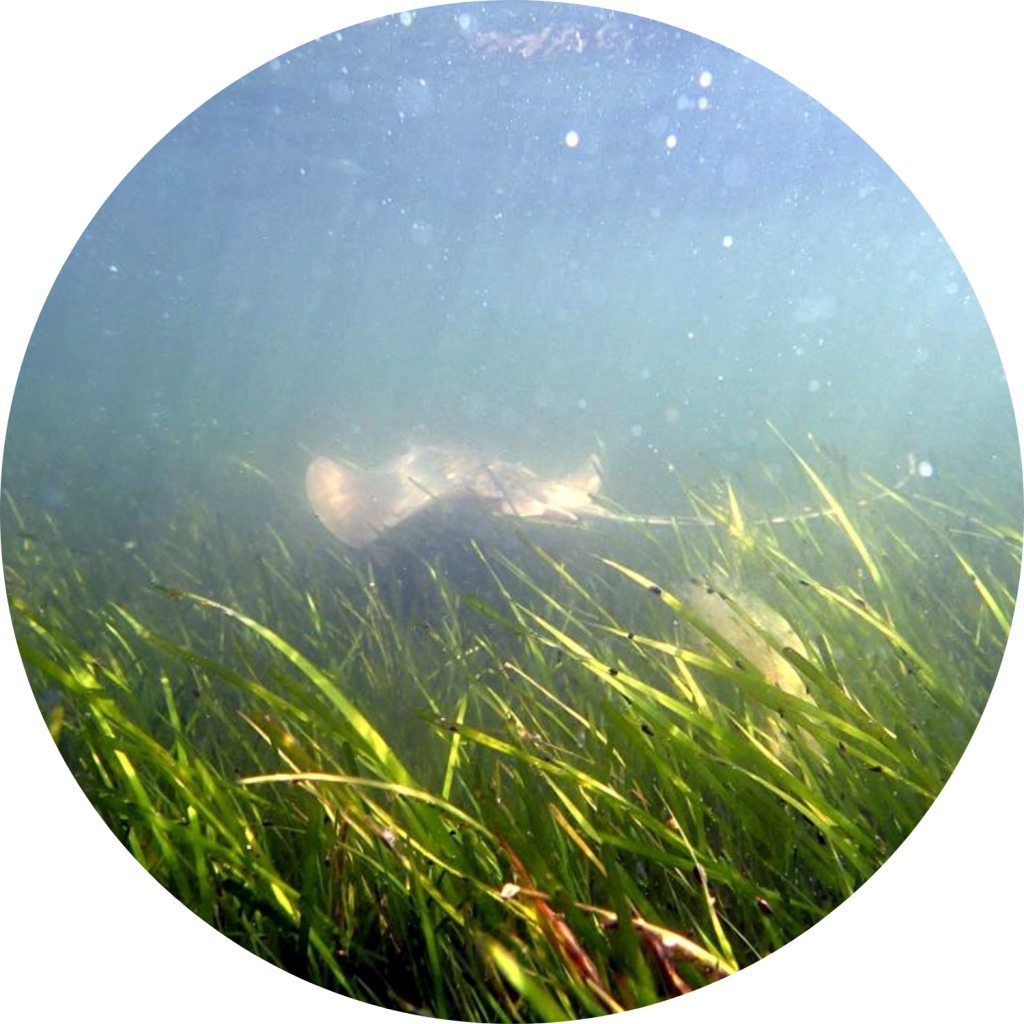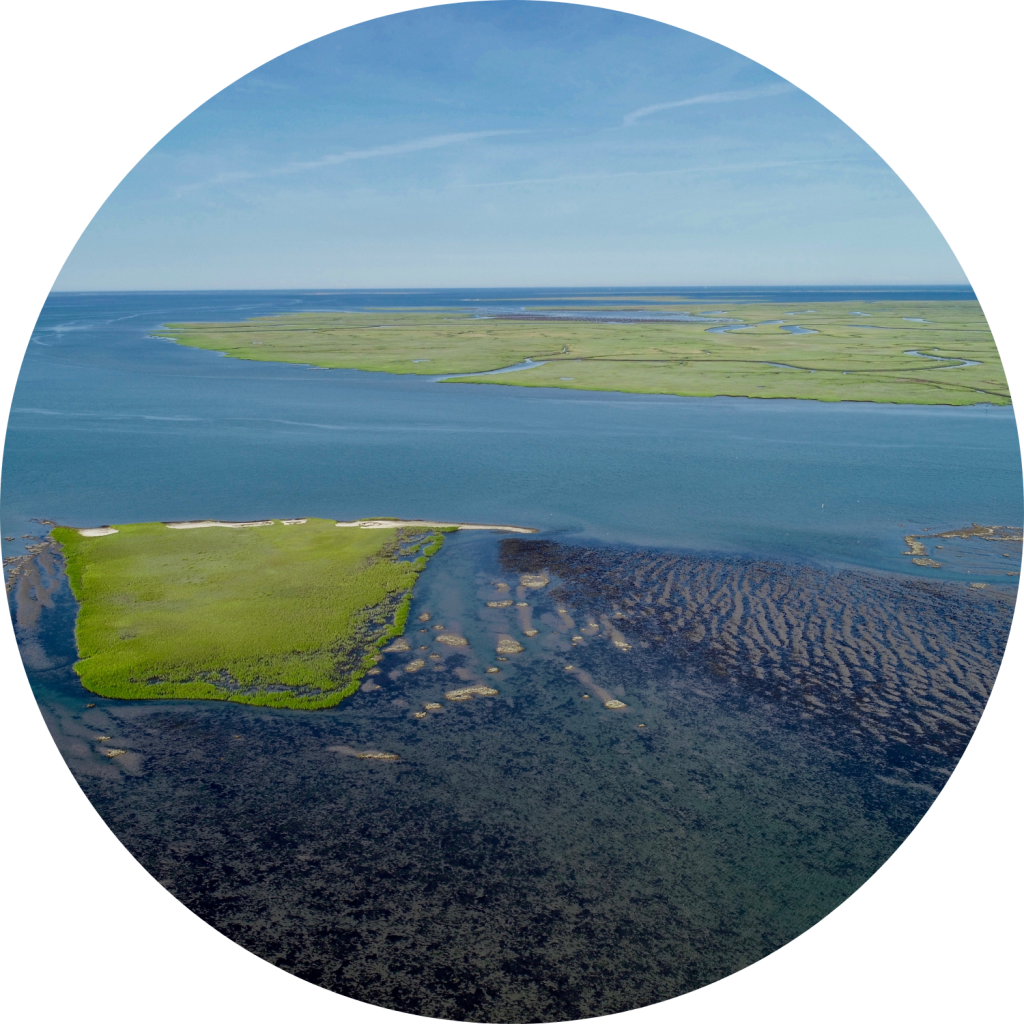Restoration & Resilience
Loss of coastal ecosystems is accelerating globally, making restoration critical to reinstating ecosystem services like carbon and nitrogen sequestration, coastal protection, and habitat provisioning. Our research focuses on the largest seagrass restoration in the world – 36 km 2 of eelgrass (Zostera marina) in the coastal bays of the Virginia Coast Reserve Long Term Ecological Research site (VCR LTER). Data collected over the last 20 years gives us a unique opportunity to understand both the mechanisms and feedbacks of restoration and the resilience of seagrass meadows to climate change, especially to marine heatwaves that are increasing.
Key Findings

Positive feedbacks enhance ecosystem state change
• Trajectories of seagrass restoration are non-linear (McGlathery et al. 2012)
• A positive feedback of seagrass on sediment stabilization improves light availability and enhances habitat suitability for seagrass growth and meadow expansion (Carr et al. 2010, 2012a,b, 2016)
• The maximum depth limit of seagrass meadows can be predicted accurately by a coupled hydrodynamic – vegetation model that captures canopy effects on sediment stabilization and water clarity (Carr et al. 2010, 2012a,b; Aoki et al. 2020)
• Restoration by seeds promotes genetic diversity, especially where barriers to natural recruitment exist (Reynolds et al. 2012a,b, 2013)
• Short water residence time is the best predictor of seedling survival. Short fetch length best explains natural recruitment, consistent with hydrodynamic control of seed dispersal (Oreska et al. 2021).
• > 100 km2 of the VCR coastal lagoon area can support healthy eelgrass, triple the current extent (Oreska et al. 2021)

Ecosystem services are reinstated within a decade of restoration
• Ecosystem services are driven in large part by plant density and enhanced by genetic diversity (McGlathery et al. 2012, Reynolds et al. 2012, Orth et al. in 2021)
• Carbon sequestration in plant biomass and burial in sediments is on par with natural meadows within a decade (Greiner et al. 2013, Oreska et al. 2017a, Berger et al. 2020)
• Compared to unvegetated sediments, restored seagrass meadows have: 10-25x higher metabolism (gross primary production and respiration, measured by aquatic eddy covariance in the Berg Lab); Hume et al. 2011, Rheuban et al. 2014a,b)
3x greater carbon stocks (Oreska et al. 2020)
• 10x higher nitrogen burial and 4x higher denitrification rates (Aoki & McGlathery 2017, 2018, Aoki et al. 2019)
• >25x higher N fixation rates (Cole and McGlathery 2012)
• By enhancing nitrogen burial and denitrification, seagrass restoration reestablishes the “coastal filter” for watershed nutrients (Aoki & McGlathery 2017, 2018, Aoki et al. 2019)

Resilience to marine heatwaves varies both spatially and temporally
• Seagrass meadows recovered in within 3 years from a heatwave-induced die-off, but sediment carbon stocks lagged behind (Aoki et al. 2020)
• Water depth modulates rates of recovery following a marine heatwave (Aoki et al. 2020)
• High temperatures caused a shift in trophic status from balanced to net heterotrophy during the die-off to net autotrophy as the meadow recovered (Berger et al. 2020)
• In situ measurements of production and respiration (Berg Lab) suggest seagrass will not be ‘winners’ in more acidic warmer oceans (Berg et al. 2019)

